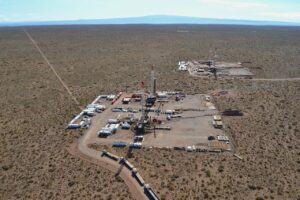
(Energy Analytics Institute, 19.May.2020) — Korean Ambassador Jang Myung-soo visited the Loma Campana field, where production comes from the Vaca Muerta formation, together with personnel from state controlled YPF, as well as officials from the Ministry of Energy and the Secretary of State (COPADE).
The officials toured different points of the field including the Loma Campana production control room, the crude oil treatment plant (PTC) and one of the wells in operation, the Neuquén Province Energy Ministry announced 19 May 2020 in an official statement.
Myung-soo said Korea imports 94% of the energy it consumes and the intentions are to evaluate the viability of importing crude from the Neuquén basin, through the Pacific, as Korea does, at present, from Ecuador, Mexico and Peru.
After the tour, Ambassador Jang and his team of advisers shared a working lunch with officials from the Ministry of Energy, COPADE, YPF External Affairs Manager Andrés Gilio and authorities from the Argentine Institute of Petroleum and Gas (IAPG) including its president Carlos García, as well as Nicolás Fernández Arroyo, the person in charge of institutional relations at the IAPG.
About Vaca Muerta
The Vaca Muerta is a geological formation that spans 30,000 km² and located more than 3,000 meters below ground. It extends through the Argentine provinces of Neuquén, Río Negro and southern Mendoza.
YPF has concessions that span 12,000 km², while it operates 16 drill rigs and more than 750 active wells in the Vaca Muerta. YPF is the only operator with three projects in the development stage (Loma Campana in partnership with Chevron; El Orejano with Dow; and La Amarga Chica with Petronas) for which it employs more than 500 people directly with a average age of 32 years and of diverse origins.
__________
By Aaron Simonsky. © Energy Analytics Institute (EAI). All Rights Reserved.

